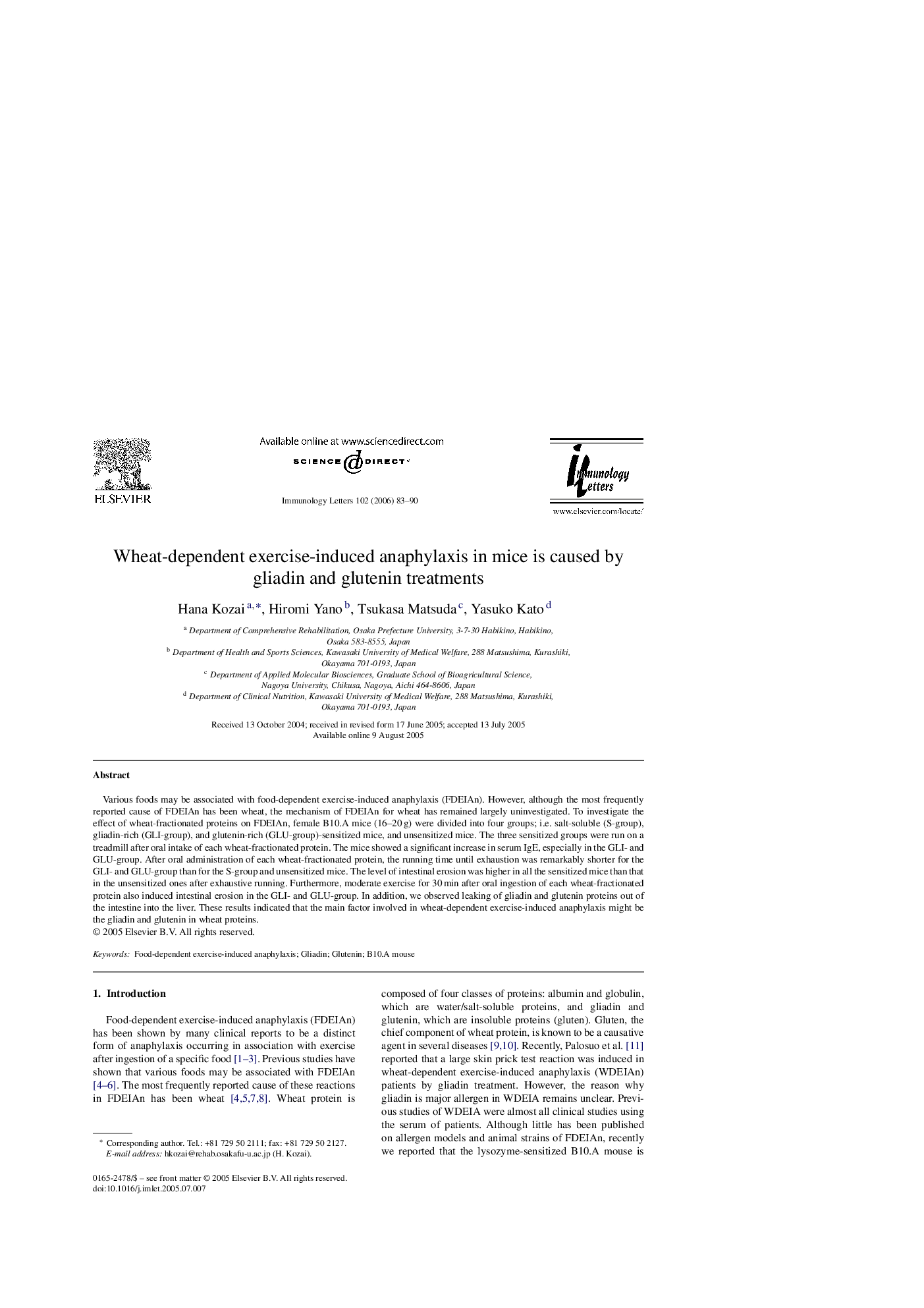| Article ID | Journal | Published Year | Pages | File Type |
|---|---|---|---|---|
| 3356559 | Immunology Letters | 2006 | 8 Pages |
Various foods may be associated with food-dependent exercise-induced anaphylaxis (FDEIAn). However, although the most frequently reported cause of FDEIAn has been wheat, the mechanism of FDEIAn for wheat has remained largely uninvestigated. To investigate the effect of wheat-fractionated proteins on FDEIAn, female B10.A mice (16–20 g) were divided into four groups; i.e. salt-soluble (S-group), gliadin-rich (GLI-group), and glutenin-rich (GLU-group)-sensitized mice, and unsensitized mice. The three sensitized groups were run on a treadmill after oral intake of each wheat-fractionated protein. The mice showed a significant increase in serum IgE, especially in the GLI- and GLU-group. After oral administration of each wheat-fractionated protein, the running time until exhaustion was remarkably shorter for the GLI- and GLU-group than for the S-group and unsensitized mice. The level of intestinal erosion was higher in all the sensitized mice than that in the unsensitized ones after exhaustive running. Furthermore, moderate exercise for 30 min after oral ingestion of each wheat-fractionated protein also induced intestinal erosion in the GLI- and GLU-group. In addition, we observed leaking of gliadin and glutenin proteins out of the intestine into the liver. These results indicated that the main factor involved in wheat-dependent exercise-induced anaphylaxis might be the gliadin and glutenin in wheat proteins.
